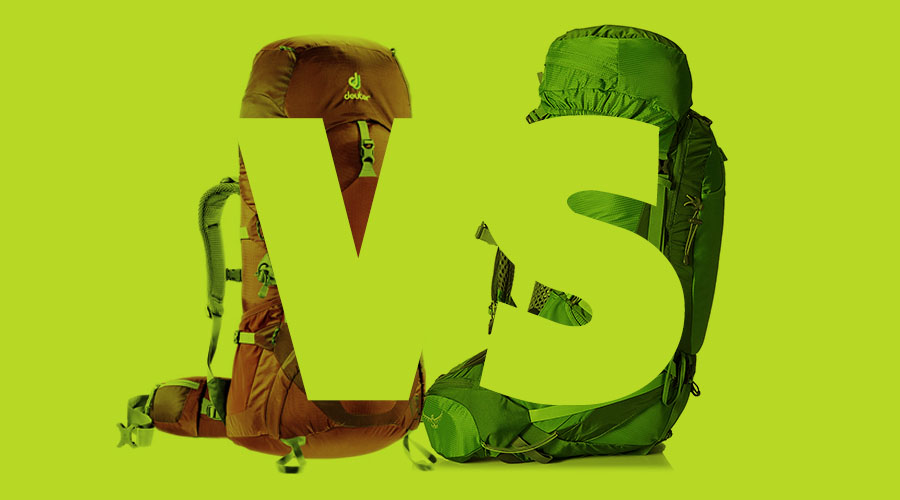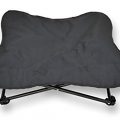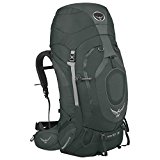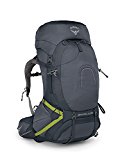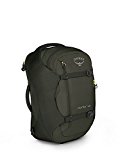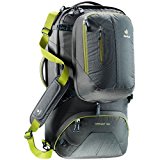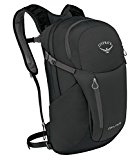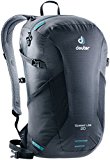When backpacking, you almost always have a pack on your back. This means unless the pack in question is extremely complacent, you are very susceptible to muscle throes. Both Osprey and Deuter have some pretty expedient backpacking bags in the market. Here’s a comparison of some of them.
Table of Contents
Backpacking Pack Comparison
Osprey Xenith 75 Vs Deuter Aircontact 75+10
Size
Both packs are definitely roomy enough for maximal regalia stuffing. Each of these two packs come with a 75Liter base volume capacity. However, the Deuter Aircontact comes with a 10Li advantage over its counterpart thanks to its extendable lid inclusion.

In regards to weight, the Osprey Xenith comes in lighter at 6.05lbs while the Deuter Aircontact is a tad bit heavier at 61lbs 13oz. One look at each of these bags is enough to tell that the Deuter Aircontact the larger one of the two. Its 35” of height give it a 15” vantage over the Xenith’s 20”.
Color
The Zenith comes in three favorable colors; Mediterranean blue, graphite grey, and tektite grey.
The Deuter Aircontact on the other hand only comes in a cordial arctic navy (blue) color.
Material & Durability
Deuter packs the Aircontact 75 with a waterproof quirk having forged it out of the stalwart combination of abrasion-resistance Duratex and Micro-Rip Pro Nylon.
The Xenith 75 is made from high tenacity nylon and is easily one of the toughest of its kind.
Storage & Organization
With the Xenith, you get quite a number of external storage alcoves, most of which are securely zippered. It features two front spacious pockets, a zippered main compartment with multiple access points, a zippered hip-belt pocket, a sleeping bag compartment and an external hydration sleeve with a 3Li capacity. On top of it, all this bag also features a unique, detachable top pocket which doubles as a lumbar pack if the need arises.
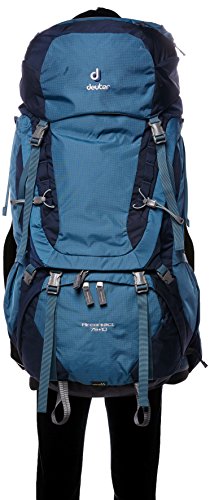
The Deuter Aircontact too has quite a few depository tricks up its sleeves. Its lid, as seen earlier, expands to add a bonus 10Liters on top of its already enormous 75Li carrying expanse. Besides that, it also comes with a zippered map pocket, top lid zippered pockets, a hip-belt slot, dual side stretch pockets, and a bottom sleeping bag compartment.
Straps & Suspension
Osprey italicizes the Xenith’s suspension savor with their signature LightWire HD Peripheral frame which aims to equally distribute the load for reinforced stability. Its Biofoam harness and hip-belt come bolstered with Neospace fabric for maximum ventilation and cushioning.
The Deuter Aircontact features a hollow chamber back panel that is properly ventilated and engineered to conform to the back’s contouring. The harness features Deuter’s ActiveFit technology which adapts the shoulder’s fringe while its VeriFlex hip-belt works to reduce fatigue by balancing out the bundle.
Extra Features
The Deuter Aircontact comes packed with a detachable rain cover and an assortment of daisy chains and gear attachment for extra impedimenta.
As for the Osprey Xenith’s extra, it is fitted with a nylon stretch mesh pocket for wet gear.
Osprey Atmos AG 65 Vs Deuter Aircontact 65+10
Size
As you can tell from each bag’s name, they both have a 65Li carrying capacity. The Deuter Aircontact 65, like its Aircontact 75Li counterpart, features a detachable floating top lid that allows it a 10Li expanse in volume capacity.
With a weight of 4.9lbs, the Atmos AG 65 is no doubt the heavier one of the two. The Deuter Aircontact 65 weighs a mere 2.5lbs which makes it an extremely lightweight option.
Color
When it comes down to color choices, both packs bring its users the merit of choice. The Atmos AG 65 is available in the colors abyss grey, Rigby red and unity blue while the Deuter Aircontact comes in either a forest/moss themed color combo or in midnight ocean blue.
Storage & Organization
Osprey never disappoints when it comes to space distribution and organization; the Atmos AG is a clear reflection of that. Besides its main compartment, it is fitted with additional stretch mesh side pockets, two quick-access front pockets, a hip-belt pocket, a zippered sleeping bag access and a detachable dual pocket lid.

The Deuter Aircontact as well has is patented with impressively organized storage space. It features zippered side pockets, a wet pocket compartment, a sleeping bag alcove, a compatible hydration sleeve, and a side map pocket.
Material & Durability
Durability is a building aspect where bags are in question. The Osprey Atmos AG, as you would expect, ratifies its manufacturer’s preceding prowess. Made out of a robust combination of High Tenacity nylon and nylon dobby, this bag not only looks good, it is built to stand the test of time.
The Deuter Aircontact 65 brings an even more brawny package to the table being 20% polyester and 80% polyamide; this makes it both a waterproof fortress and positively tear-resistant.
Straps & Suspension
The Aircontact suspension system is designed for mind-blowing efficacy and comfort. Its hollow ventilated back chamber maintains aeration, keeps your load steady by evenly distributing the load and ensures a snugly comfy fit. Its VariQuick harness adjustment system allows for shoulder straps, hip-belt and torso length adjustment for maximal conformity to the user’s body.

The Osprey Atmos AG makes use of the signature Anti-Gravity suspension system; a technology engineered to keep the even the heaviest of loads securely on the back by phasing out disproportion penchants. Further, its Fly on the Fit feature allows shoulder straps and torso length adjustment for a sock on the foot like a fit. Its stretch mesh back keeps things cooled all through haulage.
Extra Features
We all love bonus inclusions in our favorite packs. In this case, the Osprey Atmos AG gifts its users a sewn-in nylon cover that keeps the pack dry during a deluge and an ax attachment extension which may prove rather handy.
The Deuter AirContact throws in a detachable rain cover and a floating top lid into its unified package.
Hiking Backpack Comparison
Now I am sure you agree with me when I say a hiking pack needs to be some kind of special in order to fully suffice. In this section, our two Osprey vs Deuter picks are in every way made to handle basic hiking prerequisites; let’s see how.
Osprey Stratos 36 Vs Deuter ACT Trail 30
Size
The Osprey Stratos 36 is the mammoth of the two in this case. Not only is it wider and deeper, it has a 6Li volume merit over the Deuter Act Trial 30. Its 36Li capacity allows its users to go crazy when packing for a hiking endeavor.
Those who appreciate a more compact hiking pack are bound to love Deuter Act Trail’s 30Li holding capacity. Although it may not be as large as the Osprey Stratos 36, it still comes with more than enough room to comfortably throw in all essential paraphernalia.
Seeing that the Stratos 36 is physically larger, it is only sensible to expect it to be heavier too. And at 3lbs it is, although only slightly, heftier than its 2.65lb counterpart.
Color
With a 3 colored option pool to pick from, Osprey Stratos enthusiasts are spoilt for choice. It comes in eclipse blue, beet red or gators green.
The Deuter comes with even more interesting color combinations which are, undoubtedly, anything but basic. It is available in four colors namely arctic-fire, black-granite, midnight-ocean and spring-midnight.
Material & Durability
A stout blend of nylon fabrics give the Osprey Stratos a particularly resilient structure; it is essentially tear-resistant.

Similarly, the Deuter ACT Trail is notably robust, abrasion-resistant and surprisingly lightweight thanks to the Polyester-Polyamide crux material.
Storage & Organization
Although pretty compact in construct, the Deuter ACT Trail comes with a refreshing array of alcoves. They include stretch side pockets, a wet/dry compartment, a zippered map pocket and several divisions within its main compartment.
The Stratos 36 is fundamentally made for optimum and integral storage and space disposition. It features a multi-access main compartment, front zippered stash pocket, side stretch pockets, lower compartment sleeping bag compartment, and two zippered hip-belt pockets.
Straps & Suspension
Since either pack is designed for hiking purposes, their practical suspension systems are very much conjectured. Osprey features the AirSpeed suspension which due to its tensioned mesh back system offers top-rated ventilation and comfort. Its die-foam padded shoulder harness and hip-belt diminish unnecessary pressure during haulage while maintaining the much-needed load balance.
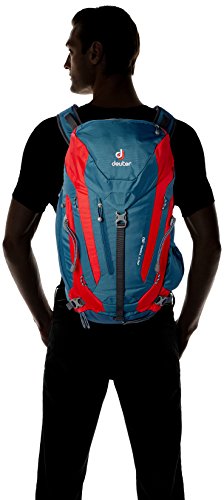
Like many of Deuter’s backpack, the ACT Trail 30 is craftily fixed with the signature AirContact system. It brings the load closer to the body for a firm carriage. Its Derlin frame and 3D airy mesh further stabilize the bag and help reduce heat build-up. The back panel comprises a hollow chamber cushioning that works to maximize load distribution.
Extra Features
On this list of extras, the Osprey Stratos includes a unique trekking pole attachment, an internal hydration system, and detachable dual compression straps while the Act Trail pack constitutes a detachable rain cover and an internal hydration system.
Travel Backpack Comparison
Traveling means a whole lot of ferrying: ferrying any load calls for a substantial amount of room and organization. You will find the above-mentioned packs are distinctly but well suited for travel packing in the following comparison.
Osprey Porter 46 Vs Deuter Transit 50
Size
Even though both bags have a volume expanse adequate for travel packing, the Deuter Transit 50 sweeps away the top medal for this one. At a 50Li volume capacity, the Deuter easily whips the Osprey Porter pack 46Li holding expanse.
Although considered lightweight in its own caliber, the Deuter Transit weighs 4lbs 13Oz which is amicably a lot over the Osprey Porter’s 3.4lb.
Color
The Porter, being a product of its Osprey, comes in with an array of color choices. You can this pack in castle grey, black, diablo red or mineral teal.
The Deuter Transit, on the other hand, comes in singular coloring; Anthracite moss.
Material & Durability
Each backpack reinforces its resilience distinctly. The Deuter Transit does so through its PU coated Polytex fabric which is super waterproof and sturdy. The Osprey Porter is made from rip-stop nylon which is extensively recognized as incredibly durable.

Storage & Organization
The Deuter makes luggage arrangement a cinch thanks to its u-shaped access to the main compartment. Other than that it also includes a detachable day-pack, side pockets, an organizer pocket, and a bottom compartment storage division.
As for the Osprey Porter, its cordial array of pockets include a lockable laptop sleeve, a front panel quick access pocket and a multi-access main compartment. It also features cord loops with which one can attach a daylight pack (sold separately).
Straps & Suspension
Most light travel packs feature rather a simplistic suspension and harness systems. In this case, both pack, on that same line of thought, have pretty impressive suspension systems.
The Osprey Porter constitutes a stowaway back panel and harness system that allows the bag a suitcase transformation merit. Nevertheless, its shoulder straps and hip-belt are sufficiently padded for total haulage comfort. It also features dual padded carry handles to facilitate no-brainer toting.
The Deuter too features a strong suspension system that, with the aid of the X frame technology, offers maximal load transfer and firmness. Besides that, its VariQuick Adjustment system involves a fin-shaped hip-belt that, again, aims to stabilize the pack.
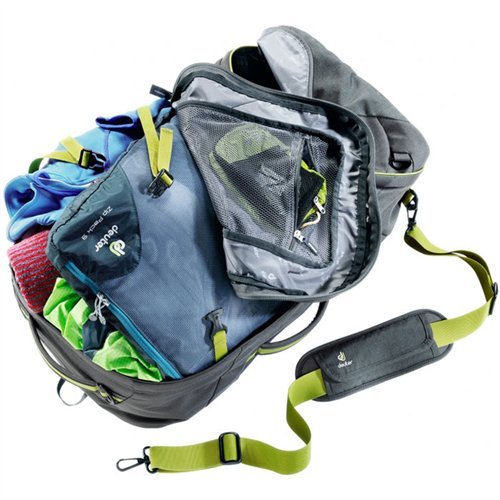
Extra Features
The Osprey porter comes with a convenient straight jacket compression feature which helps secure its contents more firmly. The Deuter Transit features a detachable daylight pack which is, in all honesty, an ingenious addition.
Daypack Comparison
Osprey Daylite Plus Daypack Vs Deuter Speed Lite 20
A short travel trip requires light packing and for that, you need a light but nevertheless apt backpack. Like for instance, the above picks.
Size
One thing is obvious about these two, they are anything but bulky. The Osprey Daylite pack is pleasantly buoyant at a 1lb 3.8Oz weight. The Deuter Speed Lite 20 is even lighter weighing just a pound. Even with their 20Li capacities, it is easily discernible that both packs are very unlikely to weigh you down even when fully packed.
Color
As you would expect, Osprey gives its users with a rainbow of color choices. They include black, eggplant purple, red, solar yellow, magma orange, grey, white, beryl and Tahoe blue.
The Deuter Speed Lite comes in a trio packed color basket. Its color options include black-granite, arctic-fire and spring-midnight.
Material & Durability
Nylon is a popular backpack fabric and in this case, both bags are products of varying forms of nylon. The Osprey Daylite is made from a double diamond ripstop nylon while the Deuter Speed Lite is made from a combination of nylon and Polyamide.
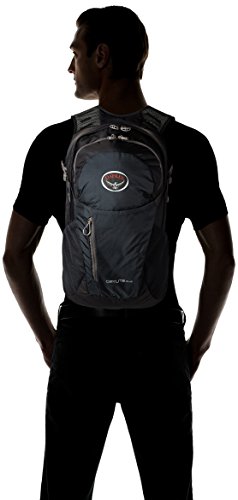
The Deuter Speed Lite is patented with a more solid water and wear-resistant advantage as it is PU coated.
Storage & Organization
First up is the Osprey Daylite pack which consists of a large panel access main compartment, two stretch pockets, a multifunctional padded interior sleeve, and a front panel pocket and organizer,
Then we have the Deuter Speed Lite that houses mesh side pockets, a secure external pocket and accessory attachment loops besides its main compartment.
Straps & Suspension
Deuter made sure to fit the Speed Lite with their signature Derlin U frame that is often tensioned to rev up stability. In addition to that its shoulder straps are wide and mesh lining for ventilation. It also has a removable hip belt and adjustable chest strap.
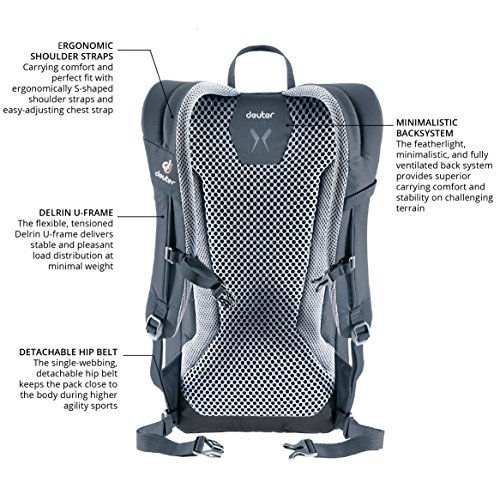
The Osprey Daylite guarantees complacent toting with its die-foam, mesh layered back panel. Its shoulder straps are designed to exert minimal pressure regardless of the load’s nature.
Extra Features
The Osprey Daylite pack has a bonus hydration sleeve that is practical and handy. The Deuter Speed Lite not only has a hydration sleeve, but it also comes with compression straps and reflective detailing that stand out in the darkness.
Deuter vs. Osprey – Which brand should you choose?
History
Named after the emigrating bird of prey, Osprey, has become synonymous with surf culture since it’s an introduction in 1974. The Californian brand is from humble beginnings, starting out with just a single sewing machine and a determined designer. In the past thirty years, Osprey has gone from strength to strength, building a name for themselves in outdoor industries like hiking.
With a huge global reach, excellent customer and a reputation to protect, Osprey products are one of the safest investments. If anything goes wrong, you’ll be able to receive a refund in full, plus you can trust the overall manufacturing quality that goes into their products.
Osprey is an established company, but it looks like a baby in the face of Deuter’s incredible 119 years in the industry. The German brand began as early as 1898, producing commercial bags for business. Their list of clients included the post office, as well as reputable horse trainers. A company that survives this long has done so by refusing to change.
Today, the Deuter brand has positioned itself as the go-to bag for snowboarding, climbing, and hiking. This brand is also environmentally conscious.
Where possible their products will be eco-friendly plus they donate one euro to a charity protecting forest for every bag they sell. Buying a bag from Deuter’s isn’t just about you, it’s also about planting trees and pushing for sustainable manufacturing in the future.
Size
These manufacturers are both international heavy-weights with years of experience, and products, backing them up. Their bags are available in all shapes and sizes so the defining factor will be you. Think about the type of trip you’re embarking on. A month-long trek along the Camino de Frances is going to need a different bag for a weekend snowboarding trip.
As a rule of thumb, a weekend bag should be capable of carrying, at the least, 40 liters. If you’re going on a longer trip, then you’ll need to get a bag at least double that size.
Since we’re talking about size, make sure that you size yourself up to. If you’re tall, make sure the straps are long enough to hitch the bag on tightly. The best way to work this out is by taking a trip to your local store to try the bags on. If anything feels uncomfortable don’t invest in that bag. A minor discomfort might seem like nothing in the shop but can easily become unbearable on a long-distance trek.
Weight
The larger the bag the more weight it will have. When a bag is full to the brim, an additional Kilo can feel like a Ton. Modern backpacks are made from ultra-light materials so there shouldn’t be too much of a weight issue with upmarket brands like Deuter and Osprey. Of course, most of the weight is what goes in the bag rather than the bag itself.
This makes it all the more important to get a bag that fits right. Additional straps and supports help to evenly distribute the weight of your bag which makes it feel lighter on your back. A cheap bag, that is poorly fitted, will always feel heavier than a well designed, well-fitted bag.
Deuter backpacks use “air contact lite” supports which provide padding and help to distribute weight evenly. More often than not, on the larger packs, you’ll also get an aluminum frame to help keep the bag in shape. Osprey, on the other hand, adopts adjustable bungee cords to help you carry extra weight in comfort.
Of the two, Deuter’s patented technology tends to outshine Osprey’s, although some customers will find Osprey bags more comfortable on shorter trips.
Durability
A poorly made bag can be a disaster in the wilderness. You need a material that can breathe, is lightweight and, preferably waterproof to navigate the trickiest terrains.
Deuter bags tend to be constructed from a material they call Dura-tex. It’s a patented weave that uses 500 strands to create a near impenetrable cover.
A number of weaves mean that should a few tears, it won’t have a significant impact on the structure of the remaining material nor create pressure points.
Osprey hasn’t got their own research facility when it comes to fabric, but that doesn’t necessarily mean their bags are less durable. They rely on tried and tested materials like Nylon to hold their products together.
The advantage of Nylon is that it is naturally resilient whilst repelling water and dust. Osprey also offers its exclusive “all-mighty guarantee”. That means should anything go wrong with the product within its reasonable lifespan, Osprey will repair or replace the product free of charge. Which goes some way to telling you how well made their products are.
Purpose
As I mentioned in the size category, the first thought on your mind when you’re going to purchase a new pack is what you’ll be using it for. You also need to think about the type of climate you’ll be using it in. A particularly humid or wet climate needs a bag that has a high IP rating (water and dustproof).
Alternatively, in a hot and dry climate, you’ll want a bag that breathes so as to protect your perishable foods from going stale. A longer trip needs a longer more durable bag. A short trip needs something smaller that won’t weigh you down.

Features
Backpacks come with all kinds of smart storage features like ice-pockets, bag stands or food-storage spaces. The most important thing to consider is the organization of storage spaces alongside the quality of straps and pads. You’ll need large storage space for clothes alongside easy access to small pockets to store useful things like knives or torches.
Bag stands can come in handy, along with wheels, but these are not the most important features when the bag is going to spend most of its time on your back. Comfort, support, and material should be the main focus when you’re looking at back-packs features.
Price
The last thing to consider, but likely the thing that is at the forefront of your mind. On a shorter trip, there should be no problem with investing a little less. Equally, if this is a one-off hike, save a little money by investing in Osprey gear- the cheaper of the two brands.
If it’s a long trek, or you plan to use the bag over and over, make sure that you invest a little more.
